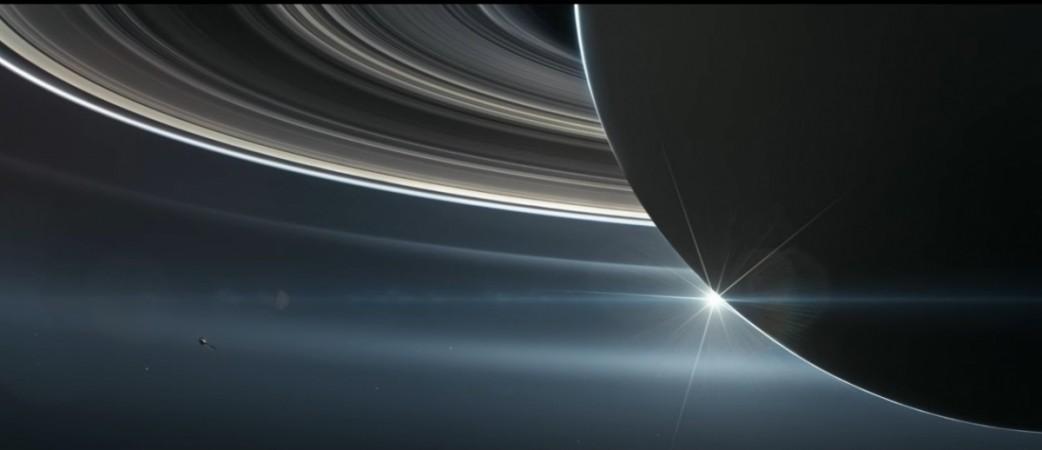
NASA's Cassini spacecraft has taken the second close flyby in the narrow gap between Saturn and its rings. What's noteworthy is that the scientists found the region to be comparatively dust-free when Cassini completed its first orbit through the region during the Grand Finale in its first flyby.
Also Read: NASA contributes ShadowCam to Korea for its first lunar exploration mission
The Grand Finale is Cassini's last act which commenced on April 26 2017, during which the spacecraft was assigned to take 22 orbits between the gas-giant Saturn and its rings. The researchers will move on further regarding their plan to analyse the scientific details.
"The region between the rings and Saturn is 'the big empty,' apparently," said Cassini Project Manager Earl Maize of NASA's Jet Propulsion Laboratory in Pasadena, California, as per a NASA statement.
"Cassini will stay the course, while the scientists work on the mystery of why the dust level is much lower than expected," Maize added.

The mission managers took extra precautions in order to shield the spacecraft from the debris present in the region. If the region around Saturn would have been dustier in the gap, the spacecraft would have used its saucer-shaped main antenna to safeguard itself during the future dives between Saturn and its rings. The spacecraft would have to make alterations in its way of making observations in case it was going to be dusty.
There are 21 more dives that the spacecraft is yet to make and out of them, four will be through the inner most Saturn rings, during which using the antenna as a shield would be important.
As per the data accumulated by Cassini in the 2,000-kilometer-wide (1,200-mile-wide) environment, it was suggested that the region wouldn't have huge particles that the spacecraft would have to be shielded from.
Cassini is the first ever craft to dive through this region, hence its engineers placed a 4 metre wide (13 foot wide) antenna in the direction of the approaching particles in order to safeguard the craft and its fragile instruments for its April 26 dive.
Cassini was equipped with two instruments, one being the Radio and Plasma Wave Science (RPWS). The RPWS is a direct and remote sensing instrument which receives and scales the radio signals emitted from Saturn, which includes the radio waves given off by the interaction of the solar wind with Saturn and Titan.
The second device it carries is the magnetometer, which is a magnetism measuring instrument. Hits of numerous ring particles per second were detected by the RPWS while it crossed the ring plane just outside the main rings of Saturn, but just a few knocks were identified by the spacecraft on April 26.

An audio format of the dust particles colliding with the instrument's antennas was created by the RPWS. The instrument detected the sounds of the debris which sounded like pops and cracks which covered up the usual noises of the whistles and squeaks of waves in the charged particle environment that the instrument is crafted to detect. Surprisingly, on April 26 2017, the RPWS team heard the sounds of whistles and squeaks instead of pops and cracks, as they had expected.
"It was a bit disorienting -- we weren't hearing what we expected to hear," said William Kurth, RPWS team lead at the University of Iowa, Iowa City as per a NASA statement.
"I've listened to our data from the first dive several times and I can probably count on my hands the number of dust particle impacts I hear," Kurth said further.
As per the assessment of the team, Cassini had been hit by very few particles while diving through the gap than the researchers had expected and they were not larger than those particles found in smoke, which are around 1 micron across.
The next flyby by Cassini through the ring plane will be on Tuesday, May 2 2017, at 12:38 p.m. PDT (3:38 p.m. EDT). It will be in a region that will be very close to its previous flyby
"During this orbit, in advance of the crossing, Cassini's cameras have been looking closely at the rings; in addition, the spacecraft has rotated (or "rolled") faster than engineers have ever allowed it to before, in order to calibrate the magnetometer. As with the first finale dive, Cassini will be out of contact during closest approach to Saturn, and is scheduled to transmit data from this dive on May 3," a NASA statement revealed.














